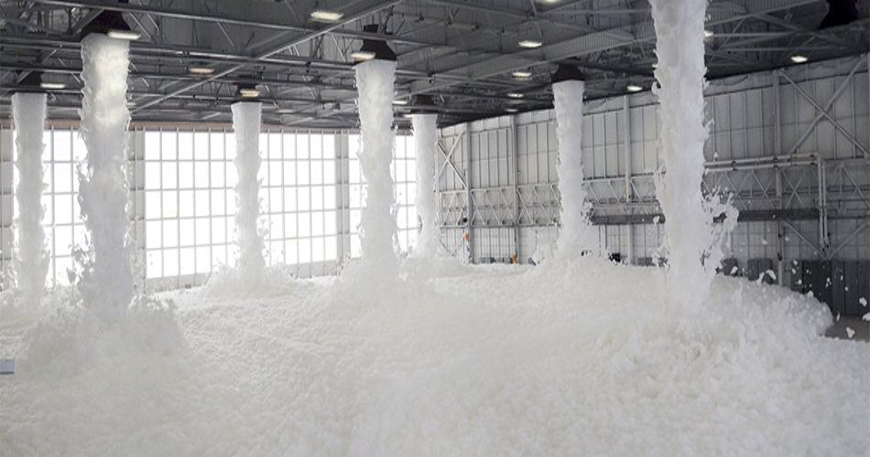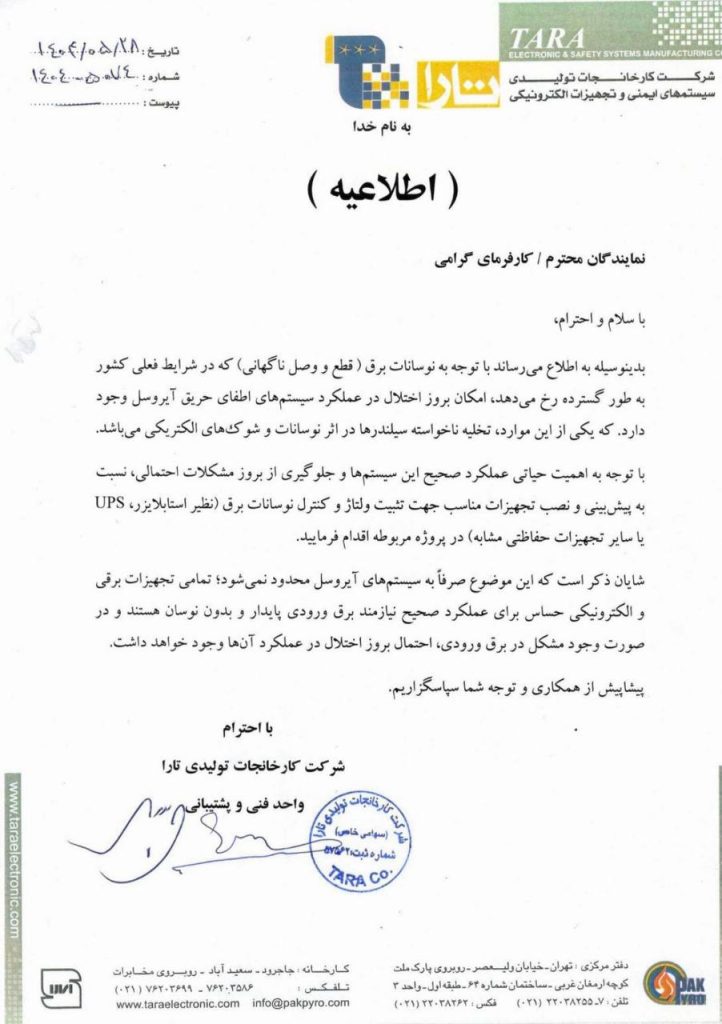Foam fire extinguishing system | Foam system
Automatic foam fire extinguishing system is used to extinguish flammable and combustible liquids. Water has a higher density than other flammable liquids. Therefore, it is not effective for extinguishing fires caused by flammable liquids. For example, if water is added to quench heavy petroleum fuels, which are a sample of flammable liquids that produce a lot of heat during combustion, the water will start to boil quickly, causing the water to evaporate and increase in volume over the fire. Becomes. In this case accident over flow Occurs on the liquid surface and causes the fire to progress. Because water has a higher density than other flammable materials, it is at the lowest level and the flammable liquid is on the surface. As the volume of fuel increases, it begins to overflow from the container. This is why foam is a major fire extinguisher for all potential hazards or areas where flammable liquids are transported, processed, stored or used as an energy source.

The bubbles produced by foam fire extinguishing systems are composed of a combination of foam and air concentrate. If these three materials are mixed in the right ratio, they form a uniform foam blanket. Extinguishing fire with foam depends on the bubbles produced. The bubbles produced during extinguishing, like a floating blanket, stick to the surface of the flammable liquid and prevent air from entering. A coating placed on the surface of a flammable liquid prevents flammable vapors from entering the air, thus leaving a gap between the fuel and oxygen. This leads to suffocation of the fire and control of the fire. Due to the high moisture content of the foam, it helps to cool the combustible liquid or any hot object in the environment.
The method of operation of this fire extinguishing system is such that during the extinguishing system, it combines water and foam system in a proportion determined in advance and delivers it to the nozzles installed in the environment through the piping network and starts the extinguishing operation. Slowly The foam that comes out of the nozzle is the result of combining a solution of water containing foam with air. Solvent-resistant foam is used if flammable materials are composed of polar petroleum products. The equipment used in the foam extinguishing system is similar to the water fire extinguishing system, with the difference that in addition to water tanks, the foam extinguishing system uses foam nozzles, pumps, automatic valves and foam-related tanks.The choice of fire floor depends on the flammable material. Foam fire extinguishing system is usually used for fire extinguishing class B type (flammable liquid storage, fuel tanks, paint composition halls, aircraft hangars, solvents, etc.). The systems used for firefighting are manual (foam mobiles, turbos, nozzles, monitors, etc.) or automatic (foam chambers, sprinkler networks, etc.).
Before any plan can be implemented, it is necessary to determine the hazard that must be protected. Therefore, in the final design, in addition to determining the dimensions of the hazardous environment, other factors such as: type of fuel, the amount of access to power supplies, conditions and classification of the environment, water source and system water network specifications are very important.
Foam production equipment:
In a foam fire extinguishing system, mixing water and foam must be performed in accordance with NFPA II. There are several methods for combining these two materials, the following are three common methods of foam production.
1- Bladdar Tank system
2- Foam pump use system
3- Foam Dosing system
Bladder Tank system:
The Bladder Tank system consists of two tanks that are placed inside each other. In order for the internal tank to be flexible, it must be made of Thermo plastic. The contents of the inner tank are usually foam. The outer tank is also made of carbon steel, which contains water and compresses the tank containing foam and removes foam from the tank. The Bladder Tank system has a capacity of 15,000-500 liters in horizontal and vertical positions and has the ability to inject foam with a capacity of 3% and 6%. Pressure tank section according to ASME Seo standard. VIII is designed and implemented
Foam pump use system:
This system consists of an atmospheric foam tank with a pump. This pump injects foam into the water line. As a result, in the system of using foam pump, there is no need for the system to leave the circuit.
Foam Dosing system:
This system is one of the foam production systems that is simple and economical. The power required for this pump is provided by a coupled water turbine into which water enters and causes the turbine to rotate. This system has the ability to be installed on mobile foam equipment, firefighting tanks, fire engines, airport hangars, etc.

Foam concentrate is the main material of foam production and in terms of variety has a wide range that is selected and designed according to the needs of the system. After preparation, the foam should be properly distributed at the site of the fire. There are various accessories that can be used to properly distribute the foam. These accessories should be selected and designed as needed. This equipment includes the following:
1- Foam Chamber and Foam pourer: Foam Chamber and Foam pourer foam are suitable for the production of underdeveloped foams that are used in firefighting atmospheric tanks with fixed and floating roofs. These devices are designed and implemented in accordance with NFPA II standard.
2- Fit maker
3- Fire floor evacuation equipment
4- Foam sprinklers: Sprinklers are suitable for producing underdeveloped foam. Sprinklers have many applications that are used to extinguish fires in areas such as warehouses and places for discharging and loading flammable liquids.
5- Foam generators: Foam generators are used to distribute highly expanded foams that are used in aircraft hangars and warehouses for fire hazardous products.
6- Hydrating foam: The application of hydrating foam can be done manually and by a person. Hydrants are available in 4 and 6 inch sizes.
7- Foam monitors: In cases where a large range is required, foam monitors are used. These monitors also have the ability to control remotely.
Foam fire extinguishing system components
• Special foam tank
• Automatic valves
• Foam nozzles
• Water and foam mixer

